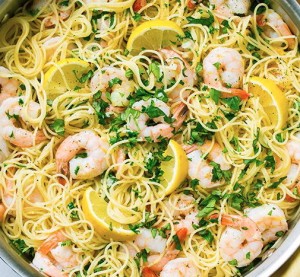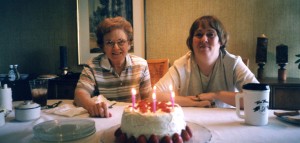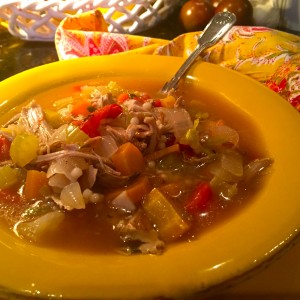Honoring Transitions In Life
“When we honor a transition, we have to slow down. When we slow down, we drop into our bodies where our emotions live. When we acknowledge and process our emotions, we become kinder, more compassionate, and more spiritually evolved human beings.” ~Sheryl Paul
Transitions in life are usually marked by major events; birthdays, weddings, graduations, divorce, loss, death, illness, moves, and job changes. These transitions require respect, honor, and time. Most positive transitions are marked with large ceremonies, rituals, parties, gifts, and are met with much thought and reflection.
Very often the challenging and painful transitions (such as losing a pet) or having a loved one suffer through a heart attack aren’t met with the same acknowledgement. When we move through pain and loss we often don’t take the time needed to honor and process our journey appropriately.
For instance, our neighbors and friends from across the street recently had to put down their beloved cat Cha Cha who had seen them lovingly through many of these transitions in life. They were devastated and honored Cha by recalling comforting memories that they had. The pain was deep for all but mostly for David who was constantly comforted and loved by Cha.
David and Teri both went back to work immediately, but it was David who suffered a heart attack because of the stress of the loss. (He is recovering after surgery and doing well). His wife Teri became an instant and unexpected caregiver during an already heart tugging time. They needed, love, peace, and time…..as we all do.
Perhaps these experiences will give us permission to take the time we need to honor the inevitable transitions we will encounter in the future.
How have you honored a challenging or painful transition your life? We would love to hear.
Happy New Year 2016!
I love everything about a New Year. A clean slate is presented to each and everyone of us, the air is rich with possibility, and our innate desire to create rises to the surface. I have fun setting intentions on New Years Eve with my husband Stephen and toasting to them with a glass of bubbly by the fire while visualizing them. We usually begin on a grand worldwide scale and eventually end up with very personal intentions. It is a powerful interactive exercise and extremely inspirational. It’s an evening of prayers for our world, our loved ones, and our own lives.
New years Eve is also extra special to us because it is our Anniversary. Magic seems to hang in the air. Because we usually go out to a very special dinner and return home to jammies, champagne, intentions, and a fire. The following evening I like to make a romantic dinner at home. This year I came up with a very simple, decadent, light, and satisfying dish… Roasted Shrimp with Lemon Sauced Angel Hair & Pine Nuts.
It’s a keeper (if I do say so myself) and it is quick and easy. Stephen kept talking about the lemon sauced pasta for days after and it was on this night that I shared a rather large personal intention I had for myself. It was quite exciting so I would like to dare you to do the same. What is something so big you want for yourself that it might make you a little uncomfortable to share or bring in a little fear? Does it push you out of your comfort zone? If the answer to one or both of these questions is yes, I am pretty sure it is one intention you are supposed to set into motion.
What are some of your New Years traditions? Would you like to share an intention of yours for the New Year? We would love to hear.
From my heart to yours.
Roasted Shrimp with Lemon Sauced Angel Hair & Pine Nuts
This decadent guilt free pasta dish is perfect for the New Year when we want to lighten up after the festive holiday season.
Ingredients
2 pounds (17 to 21 count) shrimp, peeled and deveined
Your best olive oil
Kosher salt and freshly ground black pepper
Pinch red pepper flakes
1 pound angel hair pasta
2 tablespoons unsalted butter, melted
Zest and juice of 2 lemons
¼ cup toasted pine nuts
Fresh Parsley chopped
Parmesan Regianno grated
Lemon wedges
Directions
Preheat the oven to 400 degrees F. Place the shrimp on a sheet pan with 1 tablespoon olive oil, 1/2 teaspoon salt, 1/2 teaspoon pepper, and a pinch or two of red pepper flakes. Toss well, spread the shrimp in one layer and roast for 6 to 8 minutes, just until they’re pink and cooked through.
Meanwhile, drizzle some olive oil in a large pot of boiling salted water, add the angel hair and cook until al dente, about 3 minutes. Drain the pasta, reserving some of the cooking liquid. Quickly toss the angel hair with the melted butter, 1/4 cup olive oil, the lemon zest, lemon juice, 1 teaspoon salt, pepper to taste and about 1/2 cup of the reserved cooking liquid. Transfer portions to shallow pasta bowls and arrange the shrimp. Garnish with fresh parsley, toasted pine nuts, parmesan and serve with a lemon wedge and lots of love.
Bon Apetite & Namaste
Mimi and Dona
My new caregiving friend, Ilonka Michelle O’Neil, recently recommended a touching and poignant documentary to me and I am honored to share it with you through her words.
What will happen to my child when I am no longer able to care for him/her? This is a question that weighs heavily on the minds of parents whose children have developmental or intellectual disabilities. Unthinkable for most, it is not uncommon for parents with children with special needs to secretly pray that their child will die before they do. The thought of what will become of their beloved son or daughter after they are gone competes with the excruciating thought of losing them.
For many caregivers, there is an end in sight. As was the case with Lauren Simon, author of When You Feel Like Strangling the Patient, her husband’s goal was full recovery. For others caring for aging parents or terminally ill relatives there is also an end in sight although a sad one. Eventually the loved one dies, and while there is grief, the physical and emotional toll of caregiving has ended and healing can begin.
For many parents, once their child ages out of the public school system, there is little support. These parents look out at the prospect of decades of full-time caregiving for their adult children, until they can’t do it.
Filmmaker Sophie Sartain’s poignant documentary Mimi and Dona explores the role of the long term caregiver, and what happens when one woman, in her 90’s is no longer able to care for her intellectually disabled 64 year old child.
http://www.mimianddonamovie.com
Of Lauren Simon’s work Sartain says,
“Caregiving can be so hard and isolating and relentless. I appreciate that Lauren could be so honest about how much of a struggle it can be to be a caregiver. There are many unsung heroes out there. The people who put in these hours, day in and day out, year after year, are mostly unpaid. They often have to curtail their own dreams and end up losing work.They are everywhere, and we often don’t acknowledge them enough.”
Writer Elizabeth Aquino’s daughter has severe epilepsy and an intellectual disability. She will be aging out of the public school system soon. Of Sartain’s film she says,
“Mimi and Dona is important because it highlights the significant impact of caregiving for disabled families over generations. The film does a beautiful job showing both the positive and negative aspects — the incredible love and compassion of family toward the disabled member, as well as the difficulties navigating systems of care for their loved one and the lack of supports available.”
Sartain says of her film,
“If we can bring awareness about these super parents and these wonderful families and caregivers out there, and the work that they do, and the love that they show over the years, I would be happy for that to be a result of the film.”
Author Ilonka Michelle O’Neil is the parent of a child on the autism spectrum and teaches yoga to parents of children with special needs, and other caregivers. She lives in South Florida.
Drunken Turkey Vegetable Soup
I created this delicious recipe many Thanksgivings ago to use up all of the left over crudités, wine, and of course to utilize all of the meat left on the turkey carcass. At the very end of simmering I add a small amount of miniature pasta, Acini de pepe, which in Italian means “grains of pepper”for texture. One large batch of this soup makes a wonderful lunch or dinner for a few days, which is restorative and nurturing, and leaves plenty for the freezer for those busy winter months. You will be so happy when you remember after a long day that you have some ready to go in the freezer. Thaw, reheat… add a glass of wine and some crusty bread and you will be in heaven.
For Broth
Ingredients
1 Thanksgiving Turkey Carcass
2 carrots
2 celery stalks
1 large sweet onion halved
1 garlic pod
Water (or water/white wine combo) to cover
*I use a combination of water and Hogue Pinot Grigio (my favorite cooking wine because it is inexpensive and good enough to drink) the wine combination adds an extra dimension of flavor.
Directions
Add all ingredients in a very large stock pan, bring to a boil and simmer covered with lid ajar for two to three hours….add water if needed.
Place strainer over another large pot or bowl and pour broth, bone and vegetables in strainer. Move strainer to other side of sink and cool bones and turkey with cold water, removing vegetables and garlic to discard. Set broth aside to cool slightly so fat will skim to the surface.
Separate turkey from bones and shred, set aside, You will be amazed at how much a turkey carcass will produce for a monster pot of soup.
For Soup
Ingredients
Olive oil to cover bottom of large stock pot
1 bunch celery hearts finely sliced
1 bunch of carrots finely diced *I used multi colored organic carrots from Trader Joes
2 large sweet onions chopped
Garlic to taste….*I use a lot
1 to 2 cups white wine such as Pinot Grigio
Stock (with fat skimmed off of surface)
Shredded turkey from carcass
½ to 1 package small pasta such as De Cecco’s Acini di Pepe
1 to 2 packages of Knorr vegetable soup *Optional
Salt and Pepper to taste
Fresh herbs to add at the end such as parsley *Optional
1 to 2 cans fire roasted tomatoes *Optional
Directions
Add olive oil to a large stock pot and turn on medium high. Add onions and garlic, and layer carrots and celery on top. Let cook for 30 seconds to one minute and stir. Reduce to medium and stir on and off. When vegetables begin to soften add Knorr vegetable soup packet or packets if using. This depends on how large of a batch you are making. Add wine and stir….add broth (after skimming fat off of surface) and shredded Turkey (and canned tomatoes if using adds balance and some sweetness) and simmer for 15 to twenty minutes. Turn off heat add ½ box Acini De Pepe and let sit covered for 10 to 15 minutes to finish cooking.
*This is delicious with a store bought rotisserie chicken as well. Just remove the chicken and shred prior to making the stock. In a hurry? Skip the stock section of this recipe move straight to assembling and cooking the soup and add your own broth from the freezer or store bought.
From my heart to yours,
Bon Appetit and Namaste!
Bone Broth, Restorative, Nourishing & Uplifting
In honor of National Family Caregiving Month I am sharing a very inexpensive, nutrient dense, heart healthy broth recipe. I love to sip this broth throughout the day in winter months. I crave it and it nourishes my body and soul. Yes, I said it. There is something ancient and satisfying about sipping this old world broth that packs a nutritional punch. Once or twice a month you’ll see a large stockpot simmering on my stove for days. I use it for braising vegetables, in soups, stews, sauces, gravies, or when making risotto. I certainly will be using it this week as I prepare my family’s favorite and most requested wild rice, sausage, water chestnut, and herb stuffing for Thanksgiving.
Bone Broth is typically made with bones and can contain a small amount of meat adhering to the bones. Bone broths are typically simmered for a very long period of time (often in excess of 24 hours), with the purpose being not only to produce gelatin from collagen-rich joints but also to release minerals from bones. The longer you cook this nourishing broth, the more savory and concentrated it will become. Roasting the bones and vegetables beforehand will add even more flavor and richness.
Broth is a mineral rich infusion made by boiling bones with vegetables, herbs and spices. Besides its amazing taste and culinary uses, broth is an excellent source of minerals and is known to boost the immune system and improve digestion. Its high calcium, magnesium, and phosphorus content make it great for bone and tooth help. Bone broth also supports joints, hair, skin, and nails due to its high collagen content.
Ingredients
- 4 pounds beef bones, preferably a mix of marrow bones and bones with a little meat on them, such as oxtail, short ribs, or knuckle bones (cut in half by a butcher)
- 2 unpeeled carrots, cut into 2-inch pieces
- 1 medium onion, quartered
- 1 garlic head, halved crosswise
- 2 celery stalks, cut into 2-inch pieces
- 2 bay leaves
- 2 tablespoons black peppercorns
- 2 tablespoons cider vinegar *helps leach minerals from the bones
- 6-quart (or larger) stockpot or a large slow cooker
- Fresh parsley or other herbs
Preparation
- Preheat oven to 450°F. Place beef bones, carrots, leek, onion, and garlic on a roasting pan or rimmed baking sheet and roast for 20 minutes. Toss the contents of the pan and continue to roast until deeply browned, 10 to 20 minutes more.
- Fill a large (at least 6-quart) stockpot with 12 cups of water (preferably filtered) . Add celery, bay leaves, peppercorns, and vinegar. Scrape the roasted bones and vegetables into the pot along with any juices. Add more water if necessary to cover bones and vegetables.
- Cover the pot and bring to a gentle boil. Reduce heat to a very low simmer and cook with lid slightly ajar, skimming foam and excess fat occasionally, for up to 24 – 48 hours on the stovetop. The longer you simmer it, the better your stock will be. Add more water if necessary to ensure bone and vegetables are fully submerged. Alternately, you can cook the broth in a slow cooker on low for the same amount of time.
- Remove the pot from the heat and let cool slightly. Strain broth using a fine-mesh sieve and discard bones and vegetables. Let continue to cool until barely warm, then refrigerate in smaller containers overnight. Remove solidified fat from the top of the chilled broth.
You can use any type of bones that honor your lifestyle. Here are some simmering guidelines:
- Beef broth/stock: 24 to 48 hours
- Chicken or poultry broth/stock: 24 hours
- Fish broth: 8 hours
During the last 30 minutes add the parsley if using.
YUM.
From my heart to yours.
Bon Appetite and Namaste!
My New Caregiving Friend
I have a new friend and a new story to share with you in honor of National Family Caregivers Month. Christine and I met earlier this week on Lisa Garr’s wonderful “Being Aware” Hay House radio show when Christine was brave enough to call in and share her caregiving story. She moved back in with her parents to take care of them because her Mom has Parkinson’s and her Dad has heart/breathing issues. Christine courageously expressed that she has frustration and resentment because she can only do so much, and her parents are making choices about their health that is not in their best interest.
She shared, “I actually WANT to help take care of my parents – it is something I feel fortunate to be able to do. At the same time, I do have anger because I don’t always have the energy to do the things that my mom needs help with, and then I am resentful that she needs the help because she wouldn’t need as much help if she took better care of herself.”
Then Christine mentioned that she too has had some health struggles along the way. She is a three-time survivor of Hodgkin’s Lymphoma and worries about the effect her current environment is having on her own health. She welcomes even simple changes such as eating healthier (my wheel house- I can help!) but her parents resist.
“BOUNDARIES” I exclaimed…which she heard and acknowledged. Setting boundaries is one of the most important and yet challenging decisions we caregivers must make.
When I was a flight attendant many years ago, we were instructed to put our oxygen masks on first or we would be of no help to anyone else on the aircraft. I really want to emphasize that metaphor to all caregivers: you MUST take care of yourself first. It seems so simple… but it is not. As caretakers of our families, loved ones, friends, or patients (as it applies to professional caregivers) in a health crisis, our needs fall by the way side because our natural instincts are to put the patient first and ignore ourselves.
At some point, many if not most family caregivers will need to turn to professional caregivers and other professional sources for help. That decision is a delicate and sensitive bridge to a new way of living and breathing in the world, so you dear caregiver can live your own life while you still love and care for your family member.
I highly recommend The Family Learning Center as a gentle and approachable place for family caregivers to gather information, support, and get guidance when professional help might be needed.
I have more to share with you about this beautiful story as we have only just begun the conversation. Please join in.
Christine, I have a yummy, healthy, comforting recipe for you and other caregivers that are striving to be more healthy and honoring of themselves as well as their loved ones.
Blessings and love,
Lauren
Yummy, Comforting, Kale and Chicken Lasagna
To offset some of the stressors of the holidays bake something easy and healthy for yourself (and your loved ones) caregiver! Winter is the perfect time to dig into comforting dishes like this chicken and kale lasagna, which gets its comforting richness from creamy béchamel sauce made healthy.
Ingredients
- 4 cups milk, milk alternative like almond for dairy free or vegan
- 8 whole black peppercorns
- 3 bay leaves
- 2 medium garlic cloves, peeled
- 6 tablespoons unsalted butter, divided, or butter alternative such as Earth Balance which is vegan
- 1 pound bunch kale, tough stalks removed, leaves chopped
- 1 large sweet onion
- Dash of Red Pepper flakes (for metabolism and heart health)
- Salt and freshly ground black pepper
- 4 tablespoons all purpose flour or flour alternative such as oat for vegan
- 1 teaspoon freshly grated nutmeg
- 1 package brown rice lasagna noodles cooked according to directions, drained and set on wax paper to keep from sticking. In a hurry? Not gluten free? Use one package of no boil lasagna noodles. *See note below
- Skinny shredded Chicken to layer. In a hurry? Buy a rotisserie chicken and shred. No and low sodium chickens can be found at healthy food stores. Vegan? Omit and had extra veggies such as zucchini (YUM) or chicken subsititute
- 3 cups grated skim mozzarella or vegan alternative
- 3/4 cup finely grated Parmesan cheese or vegan alternative
Instructions
Preheat oven to 350 degrees and spray at least a 9 by 13-inch (or can be made in two smaller, one for freezing.) baking dish with cooking spray.
Heat the milk, peppercorns, bay leaves and garlic in a small saucepan over low heat until bubbles appear around the edges. Remove from heat and let the mixture steep. Discard aromatics.
Melt 2 tablespoon of the butter in a large sauté pan over medium heat. Add the onions and when they begin to soften add the kale one handful at a time, tossing with tongs to wilt the greens. Sprinkle with red pepper flakes. Season with salt and pepper and add ¼ cup of white wine, water, or broth to the pan. Cover and cook until tender, 5 minutes. Drain off any excess liquid and place kale in a bowl.
Place the same pan over medium low heat and melt the remaining 4 tablespoons of butter. Add the flour and whisk and cook for 1 minute. Gradually whisk in the warm infused milk and cook, whisking frequently, until the sauce is thickened and bubbly, about 5-7 minutes. Reduce heat if the sauce begins to scorch. Remove from heat, add the nutmeg, and season with salt and pepper.
Cook brown rice lasagna according to directions, drain, and set on wax paper to avoid sticking. Or *Soak the no cook lasagna sheets in a big pan of warm water for 5 minutes, then drain and set aside. Spoon about 3/4 cup of the béchamel sauce into the bottom of the pan. Layer the lasagna sheets on top of the sauce. Spread half of the kale and chicken over the noodles and sprinkle with a third of the cheeses. Repeat with another layer of sauce, noodles, kale, chicken, and cheeses. Top with a final layer of noodles and the remaining béchamel sauce and cheeses. Cover with foil and bake for 45 minutes. Remove foil and continue to bake until golden brown on top, about 15 minutes.
Bon Appetit & Namaste
Good Morning, Honey
“Here is your morning latte”, I said handing the steaming cup of coffee and frothy almond milk to our adult daughter Cari who returned home yesterday for some care after nasal surgery. This is the gentle kind of caregiving, the short term, non-tragic type that makes the caregiver feel good.
Just in time! After all, November is National Family Caregivers month. This is the month to honor all families who have been, continue to be, or will be suddenly brought into the role of caregiving that is much more long term, possibly unplanned, unexpected, and could be infused with life changing circumstances.
Some caregivers may even feel there is no end in sight because caregiving on top of your normal life duties can be extremely tough and taxing. It can be thoroughly exhausting–emotionally, physically, financially, mentally, and even spiritually.
And the holidays, which are extremely stressful for caregivers, are upon us.
In addition, this is the busiest time for first responders as accidents, heart attacks, strokes, and other ailments spike during the holidays. This holiday brew…. you guessed it…. creates many sudden caregivers. If this has happened to you or someone you love, I have three very important tips right now that will help you make it through the end of the year.
#1 Love Yourself First. As a former Flight Service Manager on a major airline, we were instructed to put on our oxygen masks FIRST or we would not have been able to provide any assistance to anyone else whatsoever. That one truth is what I want to stress to caregivers above all: it isn’t easy at times, but you must give yourself permission to breathe and also maintain that boundary!
#2 Understand it is more than okay to feel whatever it is that you are feeling. Yes, really, (gasp!), it is…and it’s also really important to actually voice your feelings so you can work through them.
#3. Take some spiritual time daily. However you commune with that something greater– whether it is mediation, breathing, walking out in nature, praying, meditating, visualizing, or asking for strength, help and guidance~take a few minutes or more each day to call in some peace.
Blessings and Love to you and yours this very honoring month of the holiday season,
“Love yourself first, and everything else falls in line. You really have to love yourself to get anything done in this world.”
~ Lucille Ball
Caregiving & The holidays
The holidays are one of the busiest–and sometimes most stressful– times of the year for caregivers. All the usual pressures and demands on our time and energy often feel like they go into hyper drive between Halloween and New Year’s Day.
The holidays are also the busiest months for first responders as heart attacks, strokes, and accidents spike creating many Sudden Caregivers. *It was actually on Halloween that I noticed Stephens grey skin tone. Three nights later on November 3, 2011 his heart stopped four times.
Besides the obvious aspects of the added family responsibilities and expectations that the Holidays bring, over consumption of calories and imbibing too much alcohol are certainly culprits for health hazards and stress, as are rushed travel, house guests, triggered memories, and more.
The more we are aware of what is contributing to this seasonal stress, the more we can make a difference by taking extra good care of ourselves and the ones we love so much.
What Can We Do?
Slow down. Breathe.
Go to bed early and/or sleep in. Did I mention sleep? Lots of it.
Drink water constantly.
Scale back extravagant gatherings. Have everyone lend a hand and a dish. Or ask another family member to host the traditional holiday meal(s). In other words, recognize and establish your own boundaries and ask for help!
Prepare and eat healthy, delicious foods.
Cook with your friends and family.
Get out and move! Go on walking adventures. Fill your lungs with fresh air.
Drink black tea and coffee for that comforting warm sensation we all crave in the winter months. Go ahead and have a real hot toddy and thoroughly enjoy it—but maybe not have two? 😉
Better yet, make and savor warm vanilla milk.
Give yourself and your body a real gift this season and make a genuine effort to take care of yourself…which will also be the best gift you can give your loved ones.
Remember that small changes work miracles!
God Bless you and your loved ones this holiday season.













